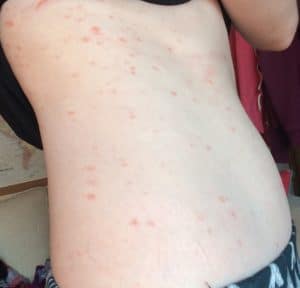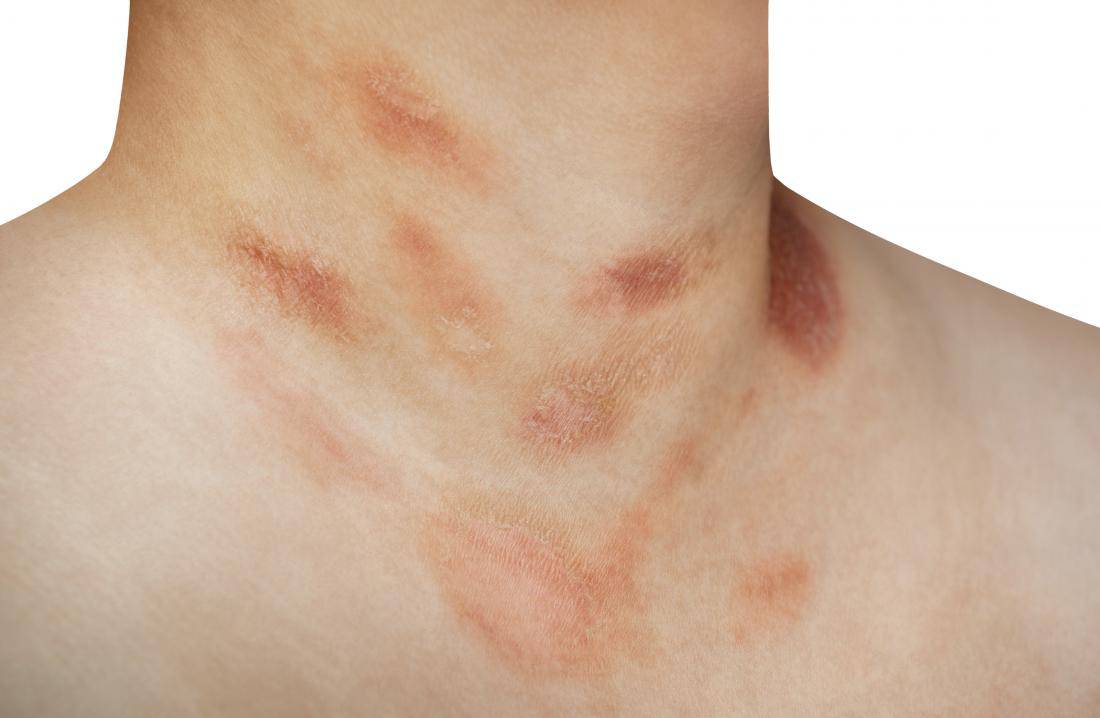
Do you notice that you’ve got patches of itchy, red skin? And it seems like some patches are big and others are really small? If so, you could have Pityriasis Rosea. Pityriasis Rosea is a common skin disease that causes rash-like symptoms to occur on the torso, upper arms, thighs, or neck. While this condition can be extremely uncomfortable, it sounds a lot worse than it is. Pityriasis Rosea is a fairly common condition and it is quite easy to treat.
The cause of Pityriasis Rosea is not known, however doctors think that it is related to a viral infection. Teens, children, and adults in their 20s, are usually the ones who are most affected, however, it can appear on anyone of any age. Luckily, Pityriasis Rosea is not contagious.
There are different phases of Pityriasis Rosea, typically starting with a herald patch and then continuing to spread in other patterns over a course of 6 to 8 weeks. The herald patch is typically a single 2-10 centimeter round shaped lesion that appears on the trunk and looks like ringworm. A few days from when the herald patch first appeared, smaller lesions may start to appear and spread to the arms, legs, and face. These lesions may have a salmon colored appearance, on darker skin the skin will look hyperpigmented. This can continue for several weeks after the first herald patch appeared, in more severe cases the rash can last up to 5 months or more. It is easy to get Pityriasis Rosea confused with ringworm, as they have very similar appearances.
Some other side effects a person with a Pityriasis Rosea rash may experience are fever, fatigue, headache, and possibly a sore throat. Pityriasis Rosea tends to occur in the colder months. It is very rare, but possible, to have a recurrence of Pityriasis Rosea.
There are treatments that can help ease the discomfort of this itchy skin disorder. Some over the counter remedies include moisturizers, steroid creams like hydrocortisone cream, Benadryl pills or liquid for itching, or natural sunlight exposure for 10-15 minutes a day can help relieve the discomfort. Although OTC options are easily accessible, seeking treatment from a dermatologist for a personalized treatment plan for you may be the best option, as it is difficult to distinguish Pityriasis Rosea from other skin disorders. Dermatologists can also prescribe stronger treatments that may help shorten the rash course, including concentrated doses of erythromycin and UVB therapies.
If you feel as though you are suffering from Pityriasis Rosea, please call The Dermatology Center of Indiana location closest to you.
Disclaimer: This blog provides general information and discussion about medical, cosmetic, mohs, and surgical dermatology. The words and other content provided in this blog, and in any linked materials, are not intended and should not be construed as medical advice. If the reader or any other person has a medical concern, he or she should consult with an appropriately-licensed dermatologist or other health care worker.
